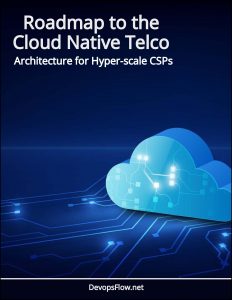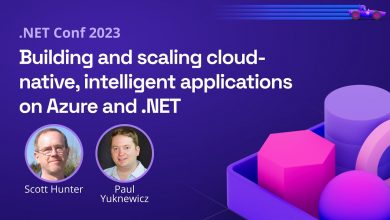Why Telecoms Needs a Cloud Native Manifesto
The Cloud Native Manifesto, developed by the Next Generation Mobile Networks Alliance (NGMN), outlines the principles and guidelines for building cloud-native architectures in the context of telco networks.
 The imperative for Cloud Native engineering in the Telecomms sector is headlined by the clarion call from Orange for an industry manifesto.
The imperative for Cloud Native engineering in the Telecomms sector is headlined by the clarion call from Orange for an industry manifesto.
Following the publication of the Cloud Native Manifesto by the Next Generation Mobile Networks Alliance (NGMN), Laurent Leboucher, group CTO and SVP of Orange, joins TelecomTV to explain what the manifesto is, why it is needed and the impact it could have on the telecom sector.
The Cloud Native Manifesto, developed by the Next Generation Mobile Networks Alliance (NGMN), outlines the principles and guidelines for building cloud-native architectures in the context of telco networks.
This manifesto aims to provide a framework for leveraging cloud computing technologies to enable scalable, flexible, and efficient mobile network infrastructure. It recognizes the need for agility, scalability, and automation in the face of increasing demands on telco networks.
Orange Leadership
As the TMF writes in this interview with Laurent, they are seeking to apply a Cloud Native approach to their core network infrastructure. In 2020 CIO Thierry Souche set the scene, saying that the Only Way is Cloud Native.
Laurent is extending the work he began for the IT systems of Orange, where he applied a Cloud DevOps model to transform their business systems and is now leveraging that learning to similarly modernize their core network.
Orange is testing how its vision will work in practice on Pikeo, an experimental, fully cloudified 5G standalone network, where they are developing network functions as microservices deployed in cloud infrastructure in containers orchestrated by Kubernetes, with the access network based on Open RAN principles and technologies.
In his TelecomTV interview Laurent describes the type of product innovations that a software-driven network is enabling for Orange, such as ‘Standalone 5G‘, where “network slicing” prioritizes certain slices to cover critical uses or specific needs and offer different levels of quality and security.
He says they will also leverage their Cloud Native capability and AI to better automate their network operations, using CI/CD DevOps practices.
At 3m:15s he is asked about network disaggregation and he says this is a key path to utilizing Cloud Native applications, allowing them to introduce more innovation as different network building blocks are split so that new industry players can provide these services. They have already begun to disaggregate some functions like L2 switches and IP routers, and are deploying Cloud Native 5G networking and are starting with OpenRAN.
From 7m:18s Laurent describes what he believes the keynote strategic goal for the Telco cloud industry should be.
While the industry is on the journey to adopt Cloud Native they are still doing so in silos – Vendors bring them virtualized network functions but each requires a slightly different flavour of Cloud infrastructure, meaning they would end up with multiple islands of small Cloud platforms to implement them.
Instead what is needed is an end-to-end homogeneous Telco cloud offering, one that is commoditized across the entire industry not just designed for single operators like Orange.
Principles
The Cloud Native Manifesto is based on the following principles:
- Cloud-Native Architecture: Embrace cloud computing principles and practices to enable scalability, elasticity, and resilience.
- Microservices: Design systems as a collection of small, loosely coupled services that can be independently developed, deployed, and scaled.
- Containerization: Utilize container technologies to package and deploy applications, enabling portability and efficient resource utilization.
- Automation: Automate infrastructure provisioning, deployment, scaling, and management to improve efficiency and reduce human error.
- DevOps Culture: Foster a collaborative culture that encourages close collaboration between development and operations teams to enable continuous integration, delivery, and deployment.
Guidelines
The Cloud Native Manifesto provides the following guidelines for implementing cloud-native architectures in mobile networks:
- Design for Scalability: Build systems that can scale horizontally to handle increasing traffic and user demands.
- Resilience and Fault Tolerance: Design systems that can recover from failures and continue to provide services without interruption.
- Efficient Resource Utilization: Optimize resource allocation and utilization to ensure cost-effectiveness and maximize performance.
- Security: Implement robust security measures to protect sensitive data and ensure the integrity of the network.
Continuous Integration and Deployment: Adopt CI/CD practices to enable rapid and frequent software releases. - Monitoring and Observability: Implement comprehensive monitoring and observability solutions to gain insights into system performance and troubleshoot issues.
Benefits
By embracing the Cloud Native Manifesto, mobile network operators and service providers can unlock several benefits:
- Scalability: Cloud-native architectures enable systems to scale seamlessly to handle increasing traffic and user demands.
- Flexibility: Microservices and containerization allow for agility and flexibility in deploying and scaling services.
- Efficiency: Automation and efficient resource utilization lead to cost savings and improved performance.
- Resilience: Fault tolerance and recovery mechanisms ensure uninterrupted service availability.
Innovation: Cloud-native architectures provide a foundation for rapid innovation and experimentation.
Orange has been an early adopter and innovator in this area, and in this Telecom TV interview Philippe Ensarguet, VP of software engineering, explains how they went about the process, what tools and partners they selected, and what lessons they learned along the way.
He also explains the importance of Kubernetes and GitOps for the cloud-native telco.
Conclusion
The Cloud Native Manifesto by the NGMN sets the stage for the adoption of cloud-native architectures in the mobile network domain. By following the principles and guidelines outlined in the manifesto, mobile network operators can leverage cloud computing technologies to build scalable, flexible, and efficient infrastructure that meets the demands of the digital era.



